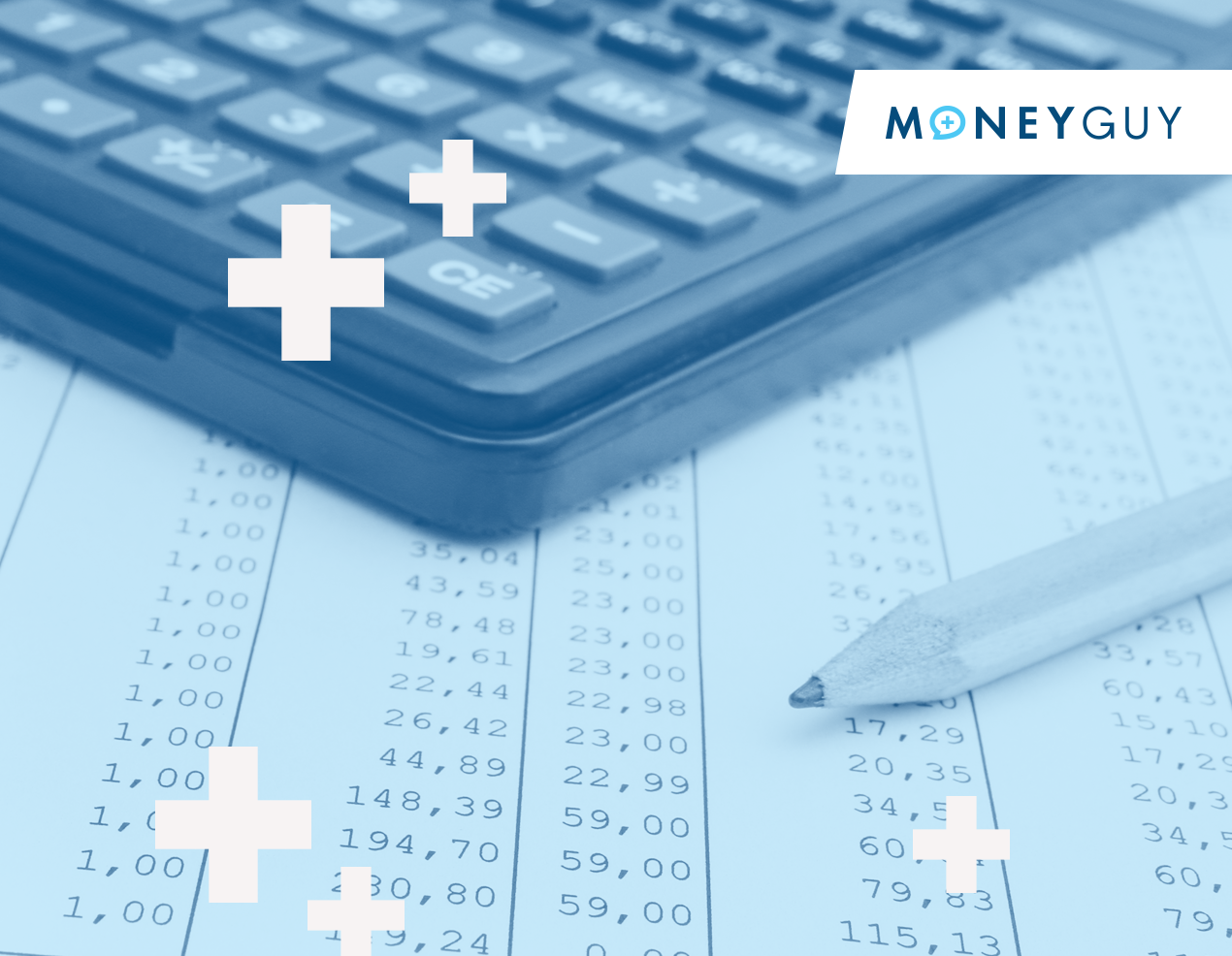It is important. Let's first talk about the client. A client, now like names, has been changed with reckless abandon. I mean, this one in it, and by the way, this is totally legit. And the fact that, look, I think one of the, a lot of people, if you ask us what our job is, a lot of people think it's that we say no to everything. And we do, we try to risk assess, we do stress tests. But no matter with some clients, it doesn't matter how much we tell them no, you're doing things wrong or you're in trouble, at the end of the day, it's still ultimately their money. Now, what's really interesting about this specific client is the way that she came in. This money is a big windfall, right? So it wasn't something where she had necessarily built and saved and accumulated a nest egg. There was an event that took place and she came into a large sum of money, and it was the first time she had ever had access to this type of money and the first time in her life where she had to manage it and navigate it on her own. Yeah, so this was one of those things where we were my biggest goal when this person came on was to educate them on how money works, kind of like what we do with the Money Guy show. But the problem, I've realized there are a lot of people that are straight-up just consumers. There's a reason why our society, in the end, and she did, she spent with reckless abandon. And we wanted to create an illustration to kind of show you what this looks like and what we're dealing with when clients don't listen and why you should be nervous when you transition from builder of wealth to consumer of wealth because there is a risk that you need to work through. I think what's I want to, I want to share some compassion here, right? So when she came into this windfall, it should have been enough money to last her for her retirement, for the rest of her life. It was plenty, it was a large enough sum that it should have been able to do that. But as it came in, it wasn't like she went out and bought the fancy houses and the fancy cars and the things that you think people end up losing their mind on. It was the small purchases, it was helping family members, it was redoing bedroom sets, it was refurnishing the house, it was the one more thing, one more thing. There were a few big things like beach condos, or I guess the condo, that's true. There was buying fancy cars for relatives, there were some things. I mean, it had some MTV cribs sure feelings to it that felt over the top. And back to reckless abandon.
So, but we wanted to create a case study to show you how this could play out, and we had two different scenarios here. We had what we consider a healthy withdrawal rate, a client with two million dollars, 60/40 portfolio, and we figured they both retired at 2,000. Can you tell? You normally do this part because you're so much better at this. I've somehow got out over the skis. I'll let you take it. So, we have a tale of two retirees here. We have Ryan, we have Deborah, and we're both assuming they start their retirement with two million dollars, and they're both invested in the exact same portfolio, 60/40. So, not super aggressive, not super conservative, sort of a balanced portfolio. Go. And they're both going to retire in the year 2000, and they're going to live off of these dollars.
Now, we don't assume there's any other sources of income – no pensions, no Social Security. Just living off of the portfolio. Now, what Ryan is going to do is say, 'Hey, I want to have a very sustainable, long-term withdrawal rate.' So, I'm just going to start pulling out eighty thousand dollars a year out of my portfolio. That is a four percent withdrawal rate based on the starting value of the portfolio. He says, 'You know what? I'm going to set my lifestyle at 80,000. That's where I'm going to live.' Deborah, however, has started listening to some financial folks out there, and she just heard, 'Hey, four percent's too conservative. I can live off of an eight percent withdrawal rate. It's going to be okay if I pull out eight percent of my starting portfolio value.' So, I'm going to set my lifestyle at a hundred and sixty thousand dollars per year, double that of Ryan.
Yeah, and what I think is interesting on this is that we did this consistently. So, we gave him the benefit of the doubt in the fact that this doesn't have the adult children pulling the money off, this doesn't have the vacation property and the other big gifts that you're giving to those adult children. But it does show you need to be nervous as you're starting to set up your consumption of your portfolio because watch what happens over this 23-year retirement period. After over 20 years, Ryan actually has more money than he started with. So, he was living off of this eighty thousand dollars a year, and yet the portfolio continued to grow, continue to grow, continue to grow. And then, if he had maintained that withdrawal rate, that dollar figure income, his portfolio now would be worth over three million dollars.
When you contrast that to Deborah, who was living off of a hundred and sixty thousand dollars a year lifestyle, she actually ran out of money in 2016. Same exact investments, same exact timeline. The only thing that changed is how much money they were pulling out of their portfolio. When you get to financial independence, when you get to the stage in life where you're no longer working with your brain, your hands, and your back, and it's on you to count on your army of dollar bills to provide for you, how much you pull out year over year and what your ultimate withdrawal rate is matters a ton. And what I like, what this visual doesn't show is the initial investment. Remember that two million dollars we started with? And what I like is the long term. We've been working with clients for me. I have clients that have been with me since the early 2000s, like 2002. And what I find amazing on some of those clients is their actual initial investment has actually gone below zero, meaning that they actually spent every bit of their principal. But Ryan's walk here, where the money is actually worth more than he put in, is very normal. I mean, that's what a healthy safe withdrawal rate can do for you. You can spend your entire principal down, but if your money and your army of dollars are working and building upon themselves, it can sustain you even through retirement. If you want to know how powerful your dollar bills are, check out our free
Wealth Multiplier here.
So, let's talk about how you can do it better. How can you not fall into this trap? The very first thing you can do is have purposeful retirement dollars. A lot of folks, when they retire or when they come into a windfall, all of a sudden have access to this money. Maybe it's a million dollars, two million dollars, three million dollars. It feels like it'll never run out. But you have to be a financial mutant that realizes some of those dollars don't just need to pay for what you need tomorrow or next month or next year. Some of those dollars are to pay for what you need 30 and 40 years down the road. So, you have to make sure that the dollars you have in retirement are purposeful and you understand what they are there for and what they are not there for.
Well, I think it's interesting when you talk to a prospect and you ask them, "Hey, how much do you spend per year? How much do you think you'll spend in retirement?" And when they don't have an answer, that's a concern. Because you do need to, at some point, have a very good list of what your expenses are. And you need to even understand the difference between needs versus wants. Because you have to plan ahead and have purposeful retirement dollars. Because if you just let life happen in retirement when you're no longer working, and you can't just work another year to get a little extra money, it's different. And it can make you feel like everything's shrinking in around you. And one thing that can help you hone in on that purpose is to figure out how much you need. What is the amount? We actually have a tool you can go check out. It's a course called our "Know Your Number" course. You can go to learn.moneyguy.com. The whole point of this is for you to figure out what is the purpose of your retirement. You want to live at this standard of living. You want to have this much income coming in. So, if that's the case, this is the number that you need to hit. If you've not worked through that exercise and you are approaching retirement or you want to be approaching retirement, I would encourage you to go check it out. Because that begins to allow you to actually assign purpose to those dollars so that you know what the future looks like. So that you don't fall into a trap like Deborah fell into and ultimately run out of money.
Yeah, and that leads to the next point, which is stress test your financial plan. Now look, this is one of those things where I'm fortunate. This is the exception, not the general way that it is with client relationships. Most of our clients are financial mutants. They get it like you guys. But there are some that even if you show them, "Look, we're going to do monte carlo simulations. We're going to show you that way you can correct course after year one, year two, year three, and quit spending, quit wasting it on the supreme Superfluous stuff." But that didn't work for this client. That's why I'm telling you, you have to create a plan and you need to listen to what the plan is telling you. So every one of those dollars can be purposeful.
This last one seems counterintuitive. It doesn't sound very Money Guy-esque, but we think when it comes to retirement, you ought to be scared, in quotations, with a healthy fear. When you consume the first time that you retire, the first time that you step away from the workforce, you ought to be a little bit nervous. When it comes to spending, you ought to have a little bit of tension, not to the extent that it frightens you into inaction or keeps you up at night. But you ought to recognize that when you decide to consume these dollars, it's a big decision. So, in the first few years of retirement, you have to check yourself to not lose your mind, not go out and buy the beach condo, the cars, and all those things if you haven't already planned for those purchases. You need to stress-test your plan to ensure it can handle those expenses. In my opinion, a little bit of healthy fear going into this time can be extremely valuable. Definitely.











